In every great tragedy, there is a single moment when the hero falters — when fear eclipses courage and the seeds of decay are sown. For Blizzard Entertainment, that moment came in 2014, and the man who held the dagger was Mike Morhaime.
Many gamers like to believe that Blizzard’s collapse into wokeness was a sudden reaction to lawsuits, cultural pressure, or the Activision merger. This is comforting — and completely false. The real story is far simpler and more damning: Mike Morhaime buckled.
The Year Everything Changed: 2014
2014 was the year of GamerGate — a massive cultural flashpoint exposing the incestuous relationship between game journalists and progressive activists determined to remake gaming in their own image. While gamers fought to defend their cultural frontier, Mike Morhaime made a fateful choice: rather than stand with the creative rebels who built his empire, he knelt to the mob.
The signs were clear:
- The Rob Pardo MIT lecture incident, where Pardo was ambushed by a gay activist for Blizzard lacking “diverse perspectives” in WoW.
- The Starcunning open letter, adding fuel to accusations of sexism.
- GamerGate references by Morhaime at the opening speech BlizzCon 2014, putting Blizzard directly in the crosshairs of the new moral enforcers.
Instead of defending Blizzard’s culture, Morhaime chose appeasement. He wanted to be liked by the press. He wanted to be celebrated at gaming awards shows and in San Francisco boardrooms. And let’s not ignore the likely influence of his then-partner Amy, who by all accounts carried progressive leanings.

From Virtue Signaling to Ideological Blueprint
By 2017, Morhaime wasn’t just making hollow PR statements; he was fully committed to transforming Blizzard’s internal culture. Under his leadership:
- Diversity hiring targets were formalized.
- An LGBTQ employee council was created.
- “More women in leadership” became an internal mantra — merit and creative spark be damned — conformity was the new currency.
In his own words:
“Our diversity initiative will require a commitment from every one of us, but especially from our leaders, managers, and hiring teams.” (Internal 2017 memo)
And publicly:
“We are challenging ourselves to draw from more diverse voices within and outside of the company and create more diverse heroes and content.” (2014 statement)
By the time Morhaime stepped down in 2018, the DEI poison was already deep in Blizzard’s bloodstream. The transformation was irreversible.
The Lawsuit Wasn’t the Beginning — It Was the End
When the California lawsuit dropped in 2021 — with sensational stories about “cube crawls” and the infamous “Cosby Suite” — the media painted it as the spark that ignited Blizzard’s cultural reckoning. This was a convenient fiction — a comforting bedtime story for the willfully blind.
By then, Blizzard was already irredeemably woke. The lawsuit simply gave Blizzard’s HR ideologues the perfect pretext to purge the remaining old-guard creatives and finish consolidating control.
Alex Afrasiabi: The Chosen Scapegoat
Afrasiabi, one of the key architects behind World of Warcraft’s deep lore, was the only individual explicitly named in the lawsuit. Why? Because he was the perfect sacrificial lamb.
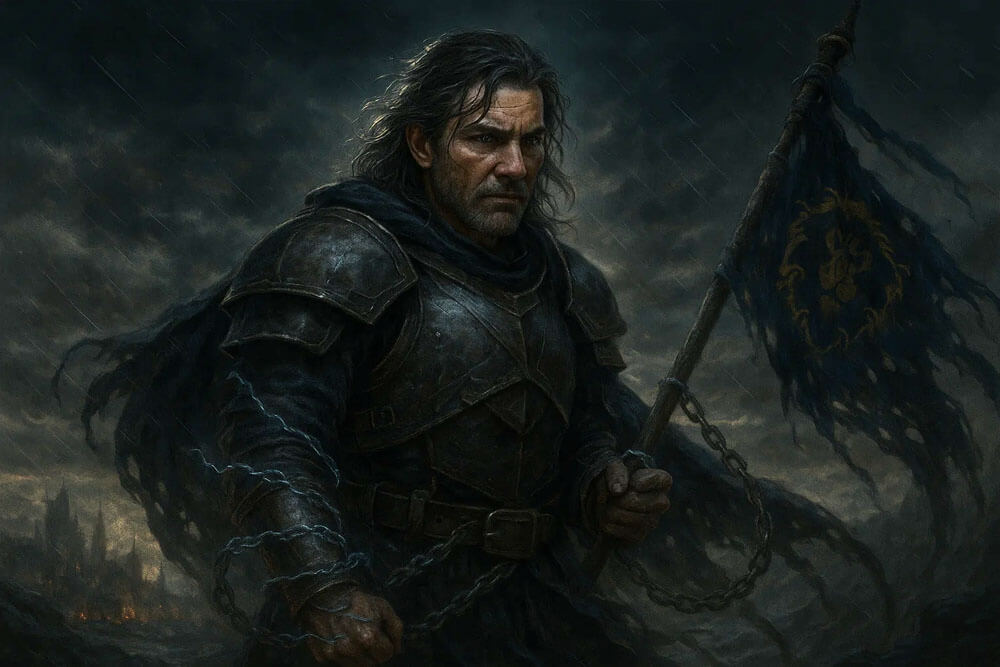
As I detailed in “Challenging the Official Activision Blizzard ‘Cosby Suite’ Narrative”, Afrasiabi was set up to take the fall. The narrative was exaggerated, twisted, and weaponized. Once he was publicly destroyed, Blizzard could parade itself as “reformed,” while completing the final purge of white, male, old-guard devs — the very souls who had forged its legendary status.
The Great Purge
As I documented in “The Persecution, Cancellation, and Replacement of Straight White Male Blizzard Developers” and “Former Blizzard Developer David Fried Reveals Blizzard Is Dead”, Blizzard systematically targeted its original creative nucleus.
HR seized control. Once embedded, they didn’t stop at hiring — they controlled speech, content direction, and creative risk-taking. The result? A terminally safe, sterile product line designed to please activists and ESG investors, not gamers.
Blizzard Today: The Final Metastasis
Today, Blizzard isn’t merely “woke” — it has become a living monument to corporate ideological submission.
As I detailed in “Blizzard’s Woke Supremacist Theocrats Have Created a Climate of Fear and Groupthink in the Workplace”, Blizzard’s internal culture is now governed by a kind of HR theocracy: a priesthood of DEI consultants and ideological enforcers who rule through fear, groupthink, and perpetual moral struggle sessions.
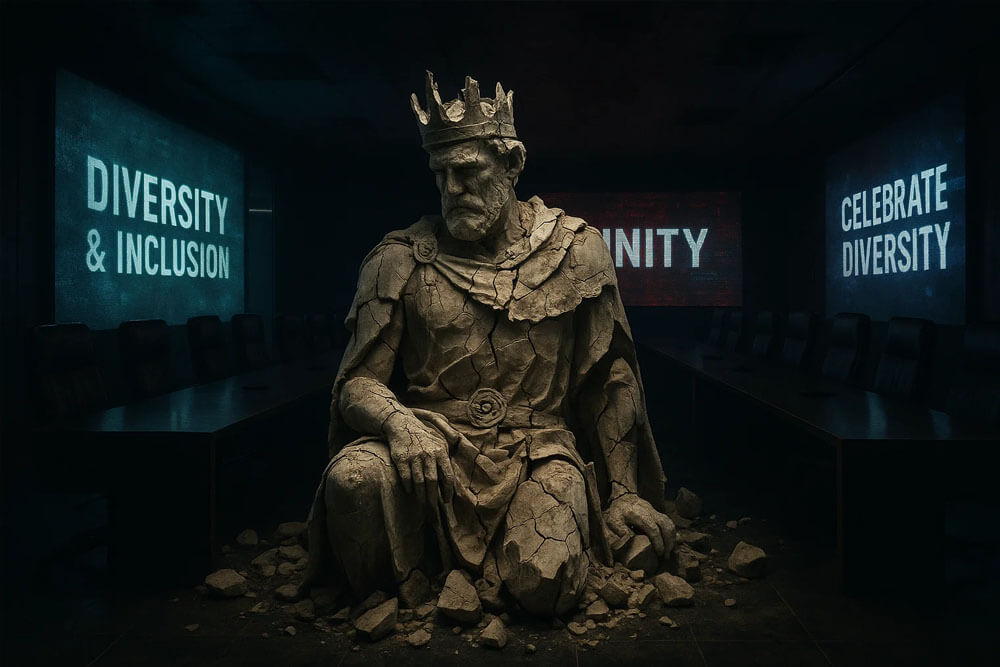
This is not hyperbole. Blizzard-Activision even hired Robin DiAngelo, infamous author of White Fragility, to lecture their employees on “unconscious bias” and systemic racism. Rather than empowering individual creativity and merit, these sessions transformed Blizzard’s workplace into a corporate confessional booth for privileged heretics to atone.
Meanwhile, the content and DEI posturing speaks for itself:
- In Overwatch, Blizzard has now confirmed five LGBTQ characters — Tracer, Soldier: 76, Lifeweaver, Baptiste, and Pharah — framing them as milestones in “representation.” But these choices weren’t driven by organic character arcs; they were carefully crafted ideological signals, used to position Overwatch as a corporate virtue shield rather than a living, breathing game universe. (Cozy Gaming Panda)
- In World of Warcraft Classic and Retail versions,“male” and “female” character options replaced with “Body Type 1” and “Body Type 2” to erase natural sexual distinctions.
- Progress Pride flags flying on campus and pride parades normalized as mandatory corporate rituals.
- In World of Warcraft, Blizzard began adding BIPOC characters into previously established zones without any narrative explanation, purely to meet modern diversity optics. Long-time fans saw it for what it was: a clumsy, forced injection of identity politics into a world that once had tight internal lore and logic. Instead of deepening the universe, it signaled that “representation” had become more important than coherence. (Kotaku)
- Blizzard also introduced Pelagos, World of Warcraft’s first openly trans character, who is presented as a “milestone for trans representation.” But rather than emerging organically from the story, Pelagos was inserted to serve as an ideological mascot — evidence that Blizzard had fully embraced identity politics as a core design pillar, not just a side theme. (PC Gamer)
- In retail World of Warcraft today, there are estimated to be around 15–25 LGBTQ characters — mostly gay, lesbian, or transgender NPCs introduced in the Shadowlands and Dragonflight expansions. This isn’t organic evolution; it’s an orchestrated ideological rollout. Instead of focusing on deep lore or meaningful player stories, Blizzard has chosen to flood Azeroth with checkbox identities to appease external activists and signal corporate virtue. (Source: community estimates and Wowpedia tracking)
- Blizzard also proudly showcased its “Diversity Space Tool,” a scoring system designed to quantify characters’ race, gender identity, body type, sexual orientation, and more. Instead of creating memorable characters through soul and story, Blizzard now uses a sterile, corporate metric to engineer “approved” representation — a perfect symbol of the company’s descent from art to algorithm. (Activision Blog)
- At recent BlizzCons, Blizzard has even created an “Inclusion Nexus” — a designated “safe space” for LGBTQ attendees and other “marginalized” groups. Instead of uniting fans around a shared love of games, Blizzard now partitions them into identity silos, transforming what was once a universal celebration into a corporate diversity retreat.
- In June 2022, Blizzard installed a Progress Pride flag and a Blizzard Pride flag at their Irvine headquarters, celebrating Pride month with a high-profile public display. The flags remained visible for months, signaling a long-term ideological commitment rather than a temporary gesture. (LinkedIn, Wolfshead Online)
- Starting around 2018 or 2019, Blizzard Activision also began sponsoring pride parades — notably LA Pride — complete with a double-decker bus in pride flag colors and branded company contingents. (LA Pride, Digital LA, VentureBeat)
- New characters designed by anti-ableist committees: a black disabled heroine, a wizard in a wheelchair, an older warrior woman wearing reading glasses.
Blizzard no longer loved their core audience — they despised them. They were embarrassed by them. This contempt led them to chase after the amorphous “modern audience” that Hollywood showrunners dream about — a mythical group that doesn’t exist, except in corporate marketing slide decks and activist wishlists.

I think this contempt for OG male gamers has trickled down to many developers too. The new generation didn’t merely inherit Blizzard’s IPs — they inherited its contempt for the very players who built its empire.
And it goes even deeper: Activision Blizzard’s DEI push is now so extreme that internal reviews and even bonuses depend on “how hard you DEI.” Former WoW lead Mark “Grummz” Kern exposed this in a viral tweet:
“Your bonus and review depend on how hard you DEI. DEI Officers are installed on every dev team to ensure THE MESSAGE.” (x.com)
This isn’t a diversity initiative — it’s an enforcement regime. DEI Officers embedded in every dev team ensure total compliance, not creative excellence.
What began as subtle virtue signaling under Morhaime metastasized into total creative and ideological capture. The worlds of Warcraft and Diablo — once defined by danger, masculinity, and high-stakes mythic conflict — are now sanitized, defanged, and Disneyfied.
The Hidden Costs of Ideological Capture
DEI and woke activism didn’t just divert Blizzard’s attention—they gutted its creative engine. Every hour spent in HR-led struggle sessions, unconscious-bias training, and virtue-signaling audits was an hour stolen from world-building, raid design, class mechanics, and innovative gameplay. In business, this is called opportunity cost.
Worse still, the inclusivity imperative pushed Blizzard into the fallacy of chasing “universal appeal.” In practice, this meant watering down distinct vision and edge—dumbing down content to avoid offending anyone, and in doing so, alienating the core male gamer audience that built the company. As one developer recently put it, DEI mandates lead to “creative compromise, alienated fans, and financial loss.” Another critic observed that forcing games to please everyone simply ensures they truly please no one.
Deep Speculation: The Titan Collapse, Kotick’s Control, and Blizzard’s Identity Crisis
Project Titan was Blizzard’s moonshot — an $80 million experiment to prove they could create something entirely new from scratch. But in September 2014, Titan was officially canceled.
Behind the scenes, leadership knew well before that the project was doomed. This wasn’t just a failed game; it was a spiritual implosion. For the first time since their rise, Blizzard faced a brutal truth: without a competitor to “borrow” from (like EverQuest for WoW), they lacked the creative fire to innovate alone.
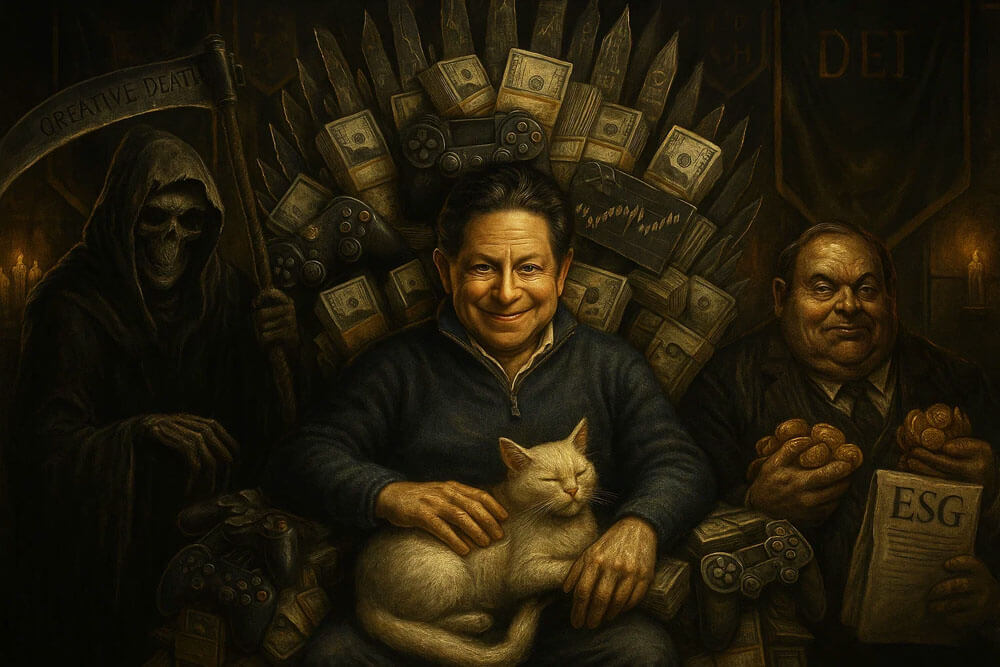
And that’s when Bobby Kotick began to assert more control.
For years, Blizzard had enjoyed carte blanche under the mantra, “We’ll release it when it’s ready.” This philosophy earned them deep respect among fans and set them apart as true craftsmen rather than corporate churn machines. But Titan’s failure changed everything.
With $80 million torched and no game to show for it, Kotick had the perfect justification to clamp down. The era of creative freedom ended. Blizzard was no longer the favored child — they were a liability in Kotick’s eyes.
Morhaime, now a beaten dog, needed to prove to Kotick that Blizzard could still make something profitable and culturally relevant. Stripped of confidence, he turned to the only assets he had left: Titan’s bones.
Overwatch: The Epcot Fantasy and Corporate Shield
Thus, Overwatch was born.
But Overwatch wasn’t just a salvaged shooter. It was a multicultural, progressive Epcot Center fantasy, designed to appeal to journalists, sponsors, and global audiences obsessed with representation optics.
Morhaime thought he could buy Blizzard a new lease on life by showcasing a colorful, inclusive utopia instead of a harsh, masculine, risk-taking world.
This pivot infected WoW too, transforming a once hard-edged, masculine fantasy world into a sanitized theme park for corporate virtue signaling.
In the end, DEI wasn’t just a policy choice — it was Blizzard’s survival mechanism, their escape hatch from confronting their own creative inadequacy and Kotick’s looming iron fist.
The ultimate irony: In trying to prove Blizzard was still special, Morhaime handed Kotick the perfect ideological leash. Overwatch became both a trophy of submission and a corporate shield — a soft power weapon to appease media critics and Wall Street alike.
Game Development Is Zero Sum
Game development — and especially hiring for creative leadership — is a zero sum game.
When you purge your most brilliant, experienced white male RPG devs — the ones who grew up on Dungeons & Dragons, Wizardry, Bard’s Tale, MUDs, and EverQuest — you aren’t just losing employees. You’re losing institutional memory, narrative coherence, design philosophy, and generational mastery.
And who replaces them? A new generation of “Fortnite kids” and TikTok-addled ideologues who have zero knowledge or reverence for what made RPGs great. They don’t care about deep lore, intricate class systems, or emergent social dynamics. They care about the vibe i.e. skin color checklists, pronoun options, and flashy skins in the cash shop.
The final insult: Blizzard 2.0 isn’t a reimagining. It is a total erasure — a cultural bonfire masquerading as progress.
Morhaime believed he was opening the gates to a broader audience. In truth, he didn’t just open the gates — he tore them down and set fire to the entire kingdom.
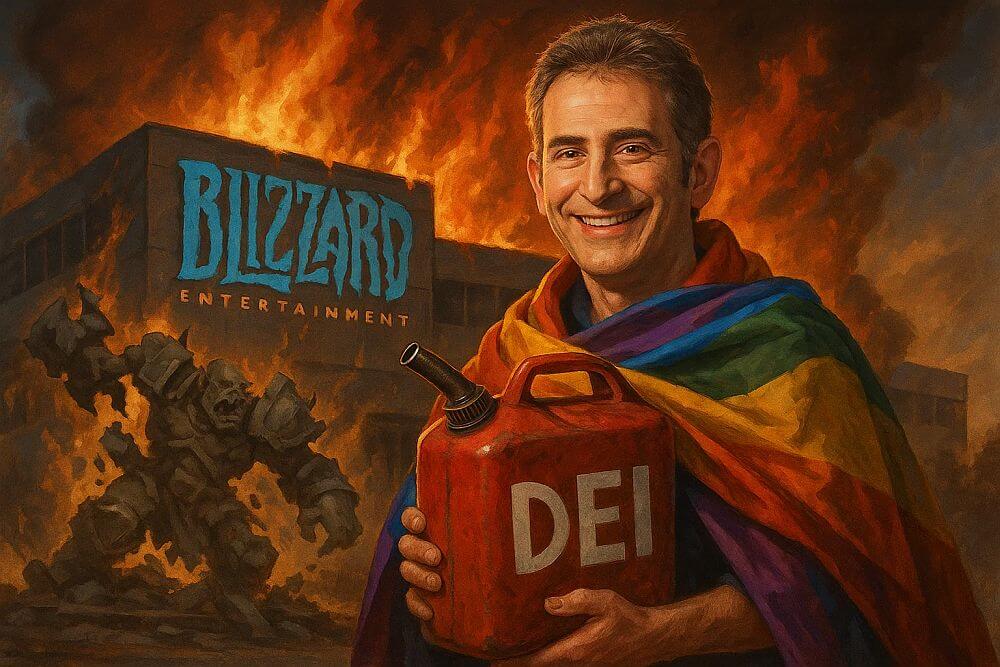
And you won’t find any of this analysis — none of this raw, uncomfortable truth — in Jason Schreier’s book: Play Nice. His narrative omits these inconvenient realities because they clash with his carefully curated progressive storyline. Where real journalism demands courage, Schreier offered comforting mythology.
Afterword: The Wisdom Morhaime Lacked
The tragedy of Mike Morhaime is not just that he surrendered. It’s that he lacked the wisdom to understand one of the most basic laws of reality: the law of unintended consequences.
Morhaime ignored the timeless wisdom of Chesterton’s Fence — the principle that before you tear down an old structure, you should understand why it was built in the first place. Blizzard’s old “fence” was its core gamer-first, meritocratic, masculine creative culture — the same spirit that had built Warcraft, Starcraft, Diablo, and World of Warcraft.
Instead, Morhaime believed he could change the ingredients of classic Coke, concoct New Coke, and the fans would obediently line up for more. When they didn’t, he didn’t merely shrug — he told them they were no longer welcome.
When you purge your most brilliant, experienced RPG devs and replace them with ideological novices, you don’t just change the staff — you erase the soul. In game development, as in civilization, “garbage in, garbage out” isn’t just a warning for code — it’s a fundamental law.
Conclusion: Morhaime, The Architect of Decay
It’s telling that Morhaime has publicly apologized — repeatedly — for Blizzard’s supposed cultural sins, especially for “failing women” on campus. Yet he has never once apologized for the true crime: the spiritual and creative implosion of Blizzard, the betrayal of its devoted players, and the complete abandonment of its design soul. His selective contrition reveals everything about where his true allegiance lies — with the ideological gatekeepers and activist class, not with the millions of loyal fans who trusted him to protect their worlds.
Mike Morhaime didn’t merely “let it happen.” He built the blueprint. He surrendered in 2014, sold out in 2017, and by the time he left in 2018, Blizzard’s creative soul was already gone.
Blizzard didn’t fall — it was pushed. And the first to put his shoulder to the door was Mike Morhaime.
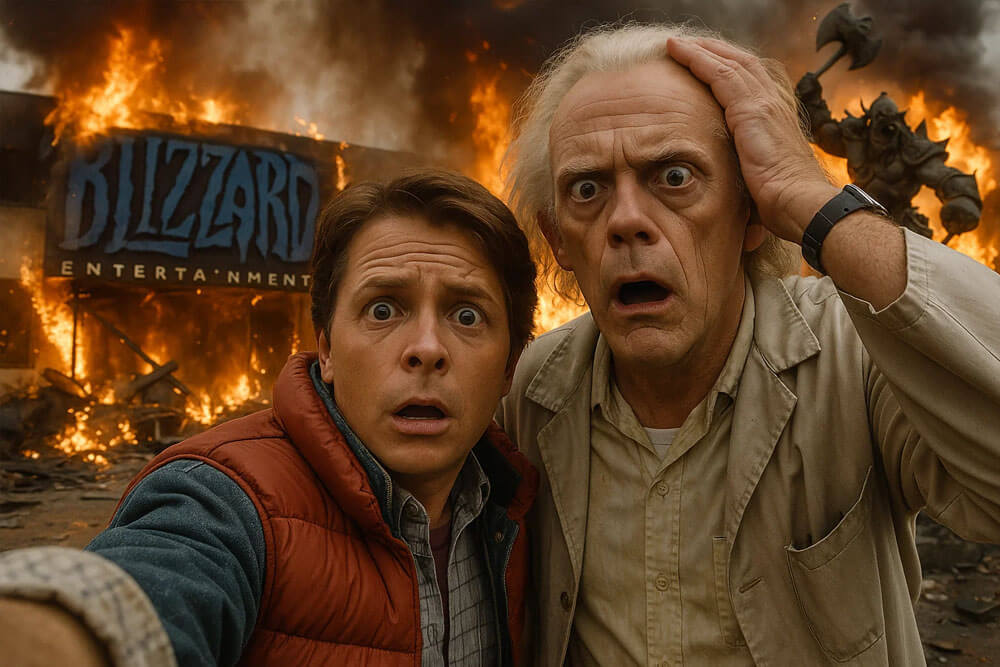
Epilogue: The Legacy Morhaime Must Live With
Mike Morhaime has to live with this legacy.
I encounter scores of former Blizzard fans every day in discussion threads and YouTube comments. They all say the same thing: What happened?!
This question isn’t just a casual lament. It’s a deep, spiritual wound from people who once found magic, camaraderie, and purpose inside Blizzard’s worlds. They don’t just miss a game — they miss a tribe. They miss a culture that valued mastery, risk, and unfiltered imagination.
And yet, instead of wrestling with that betrayal, Morhaime has chosen to double down. At Dreamhaven, he and his wife continue the same SoCal ideological drift that destroyed his first creation.
There is no redemption arc here. No sudden moment of self-awareness. No return to first principles.
In the end, the fans’ question — What happened?! — has an answer. Morhaime happened.
That’s the legacy he carries, and it’s one he will never escape. In the end, Mike Morhaime didn’t just fail as a leader — he succeeded as a destroyer.
—Wolfshead

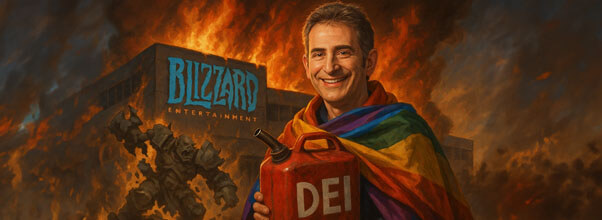
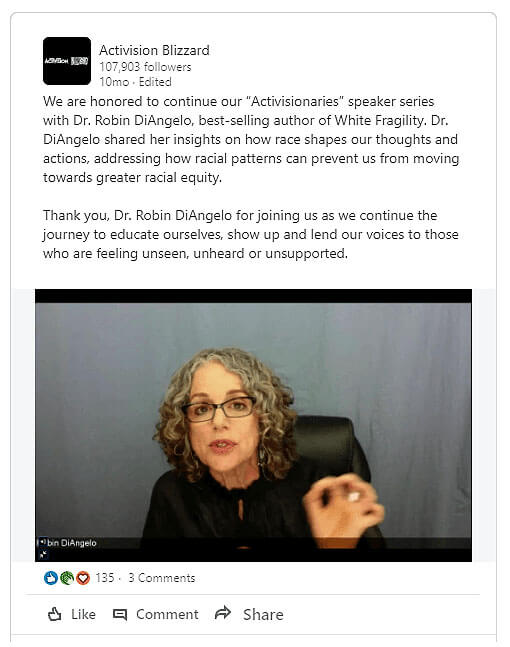
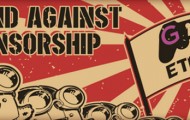

It is interesting to read both Wikipedia entries and other sources about Allen Adham and Morhaime. Adham was often absent, but he didn’t make the mistakes of Morhaime. Besides the disastrous ideological shift, Morhaime also drove away Mike O’Brien. Diablo was the brainchild of David Brevik (and the Schaefer brothers should also be mentioned), they drove them away and gave it to Jay Wilson.
Diablo 3 wasn’t all that bad, but it was a far cry from Diablo I and II. Diablo IV has a DLC with the very fitting name “Vessel of Hatred”, they really didn’t hide or spare any effort to mock Christianity in the game. People barely seem to notice anymore these days. Are we so used to Christianity being mocked by now? Sad thoughts.
Diablo 4 is very well done, supposedly, but I cannot and do not want to support this anymore. Too often in the past little things slid into an established universe, little cracks, till they get so large that everything is consumed and changed beyond recognition.
Morhaime was the weak leader who doomed a company that brought many talented people together to create culture changing games that transcended gaming and became an important part of the life of many people.
Adam and Eve, here Mike and Amy, oh well.
Alex Afrasiabi was likely the best scapegoat of them all. He was known for being outspoken and controversial, the “Furor” part of his nickname was fitting. He was not only blamed, what kind of jealous or whatever person for whatever reason goes on to remove every of the numerous references to him from World of Warcraft. The Roman “Damnatio Memoriae”, deletion from memory. But this will not work out fully, not in our age. He simply created and shaped too much of WoW. The beloved part. Not the silly nonsense they created after the removal of the “old crew”.
Many people never liked his attitude. No need to. A mature person can enjoy the good creation of someone even if they do not like the person. Happens now and then, the authors of some books I like are people I do not like very much. I also do not have to like the personality or antics of Trump or Musk to nevertheless much prefer them over the likes of Kamala and Obama, for instance.
I hope to see a new Blizzard emerge. Times are difficult, wokeness is still around and strong and still can inject itself into almost any project. See Kingdom Come Deliverance 2, for instance.
Where is Chris Metzen in all of this?
It would be nice to see Blizzard IP fully collapse under the weight of its hubris and stupidity. The only hope would be to sell it to a serious studio. Then they could fire all of the DEI feminists and trans imposters and get back to making great games.
The AAA industry needs to die, as does the Hollywood industrial complex.
His role as Executive Creative Director makes him quite part of the problem now. He didn’t prevent the travesties of the latest expansions. If his influence there I do not see it yet.
I only have an outside view of hearsay. Who did what in a team that ever grew larger. It was also interesting on whom the blame was put. Greg Street for instance got away from the fabricated Cosby Suite nonsense, despite being there. Apparently he was not really there, just a bit, something like that.
Others retired, some before. Metzen left before this lawsuit and returned after. He supposedly created Soldier 76 – now I really want to know if he also created his “orientation” or if this was added later. He also created Winston for Overwatch, the gorilla in mech suit, often also seen in diapers. Not exactly my favorite creation by him. Just like Pandaria – it was supposedly even a very well done expansion, I just found the Pandaren to be a joke gone too far and too real. IMO it marks the point when Blizzard ran out of ideas, Cataclysm still had an idea behind it, but the execution was not up to the Orc-Humans/Horde-Alliance conflict of the established Warcraft RTS games.
I do not expect Metzen to turn the ship around. I wonder that he returned, though. Why he really returned. I am afraid he just found nothing better and no better way to earn cash for a living.
Metzen admitted in an interview in 2024 that the process of development has been “democratized.”
Here’s the YouTube video cued where he talks about this. You can see that he’s clearly not happy about this:
https://youtu.be/SZjsyTS_lfk?si=vjcBfwiYEpFjG_kj&t=407
At Blizzard they have a LGBTQ and DEI advisory councils that are required to give input how how to be more “inclusive.”
Basically this means Chris is not really the creative director with veto power. He’s just a figurehead. It’s sad to see his public emasculation. I guess he needed the money.
“democratized”
People should stop dragging Democracy into the dirt. The word and idea gets now abused even more than “freedom” in the past. It’s the playbook of the Lord of Lies.
This is reductionist and stupid.
I’m one of the OG creative gods you putatively worship.
Anyone who ever writes “The real story is far simpler” is a complete moron, 100% of the time.
You should delete it.
It’s telling that rather than engage with the substance of the argument, you leap to personal insults and appeal to your own status.
You say you’re one of the OG “creative gods” — I believe it. And it makes perfect sense you’d defend Morhaime, given he was your boss and helped shape your career. But that loyalty shouldn’t blind you to the broader failures of leadership that many former fans and employees now see plainly.
Calling my piece “reductionist” is not a rebuttal — it’s a rhetorical shield to avoid the hard questions: Why did Blizzard lose its soul? Who enabled it? Why did so many “gods” sit silently while the culture decayed?
If you disagree, make an argument. Defend your position with evidence, not just prestige. Otherwise, you’re only reinforcing the point: that the old guard would rather protect each other than face accountability.
I won’t be deleting it.